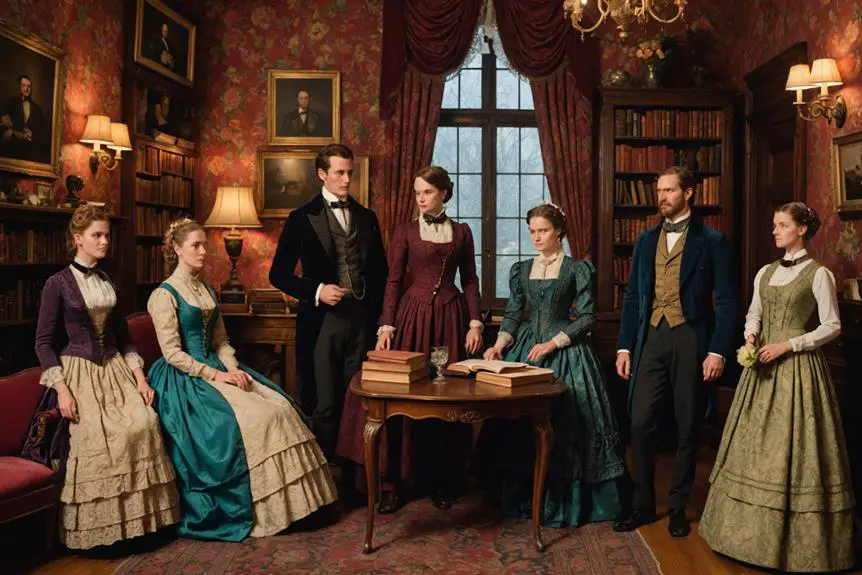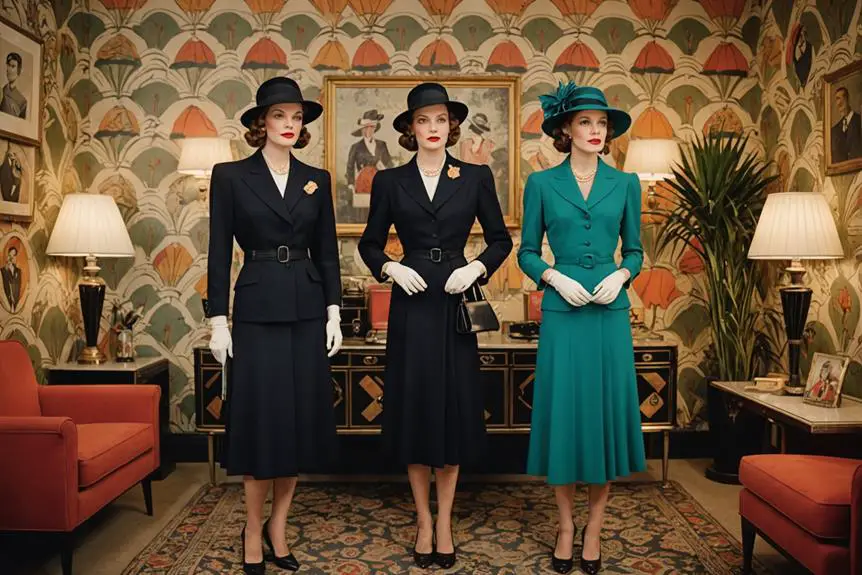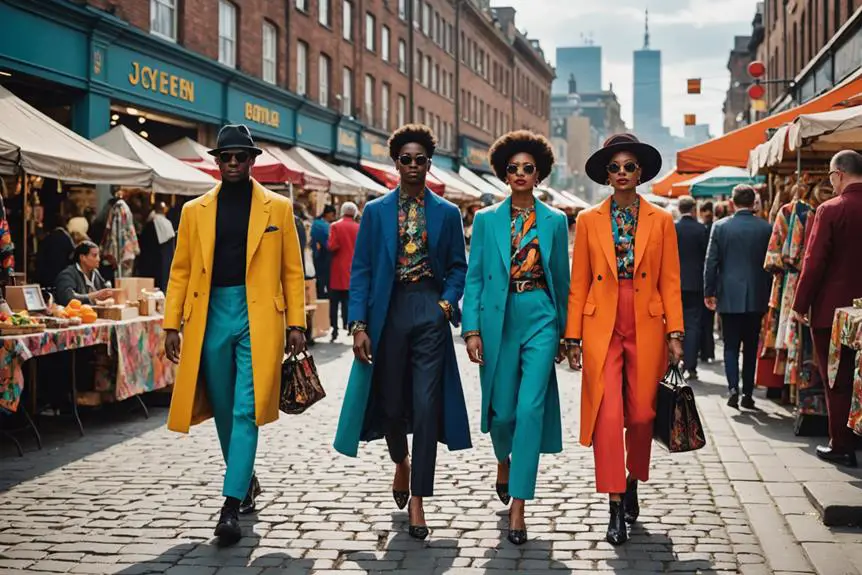Did you know that the costume designer for *Dickinson* created over 400 custom garments to capture the essence of 19th-century life? Each outfit not only reflects Emily Dickinson's evolving identity but also tells a unique story about her relationships and emotions. As you explore the blend of historical accuracy and modern flair in these designs, you might find yourself wondering how each character's wardrobe contributes to their narrative arc. The interplay of fashion and storytelling in this series invites a closer look at what these costumes reveal about the characters and their world.
Overview of Costume Design
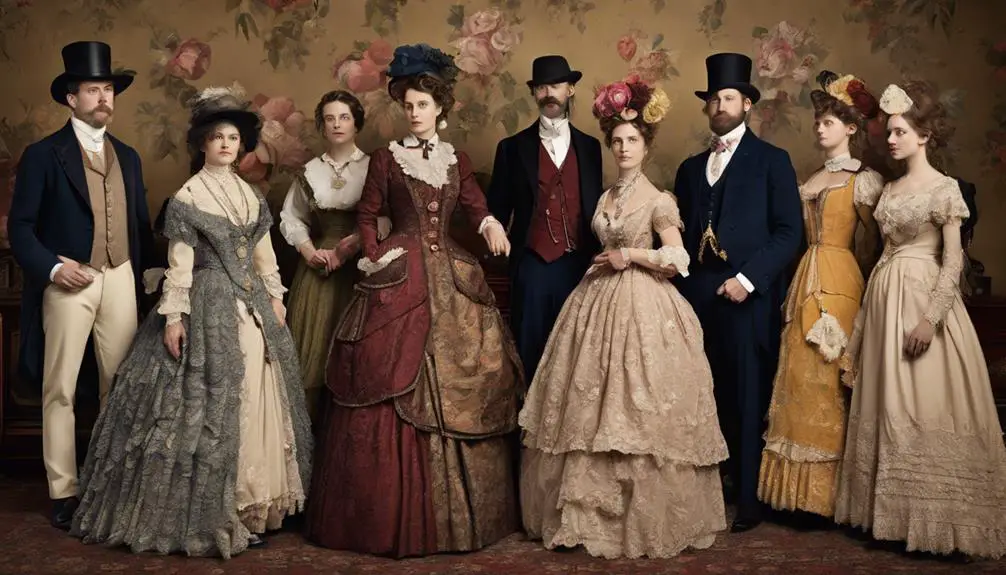
Costume design in the "Dickinson" TV show plays an essential role in bringing the 19th-century setting to life. Costume designer Jennifer Moeller meticulously crafted over 400 custom-made garments, each requiring between 50 to 100 hours of craftsmanship to accurately reflect the 19th-century aesthetic. This dedication to detail guarantees that every outfit not only looks authentic but also supports the narrative.
The wardrobe evolution throughout the series showcases Emily Dickinson's growing confidence, featuring bolder shapes and patterns that resonate with her poems' themes. Moeller used original period materials as a foundation for her designs, while also taking creative liberties to modernize the looks for added visual appeal.
The contrast between restrictive 19th-century clothing and more casual at-home attire, like Emily's white chemise, highlights the theme of personal expression during lockdown.
Furthermore, the costumes reflect character relationships and emotional states, with specific color choices and fabric selections symbolizing mood shifts and narrative developments. This thoughtful approach to costume design not only enhances your viewing experience but also deepens your understanding of the characters and their journeys throughout the series.
Evolution of Emily's Wardrobe
As the series progresses, Emily Dickinson's wardrobe undergoes a remarkable transformation that mirrors her evolving identity as a writer and individual. You'll notice how her clothing reflects her growing confidence and maturity in her 20s, particularly in season two. Here, the costume designer, Jennifer Moeller, introduces bolder shapes and patterns, inspired by specific poems from Emily Dickinson herself, which adds a layer of emotional depth to the narrative.
Moeller masterfully blends historical accuracy with modern design, drawing from 19th-century fashion while incorporating original period materials and creative liberties. A standout example is Emily's at-home look, featuring a flowing white chemise that echoes contemporary nap dresses, contrasting the restrictive public fashion of her time. This choice showcases Emily's personal expression and her desire for freedom in her style.
Each outfit you see not only tells a story but also emphasizes the evolution of Emily's character, symbolizing her journey as a passionate writer.
It's fascinating to witness how her wardrobe evolves alongside her identity, making each ensemble an essential part of her narrative arc in *Dickinson*.
At-Home Attire and Comfort
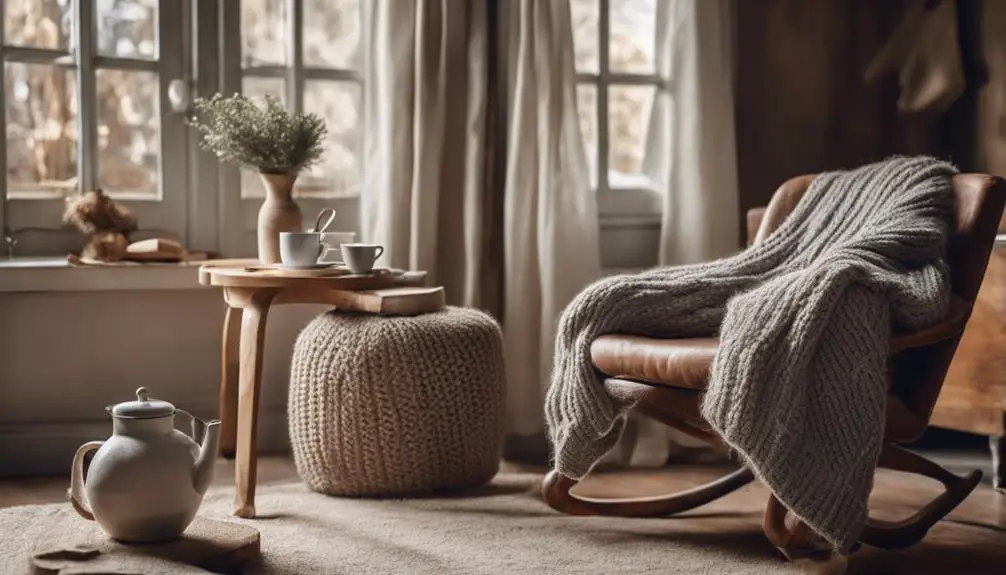
Emily Dickinson's at-home attire reveals her desire for comfort and personal freedom, particularly through the iconic white chemise that becomes a staple in her wardrobe. This piece, reminiscent of modern nap dresses, emphasizes ease during her private moments, allowing her to write and reflect without the constraints of traditional 19th-century clothing. The chemise symbolizes a shift toward individuality and self-comfort, showcasing how Emily embraces a more relaxed style in her daily life.
The contrast between her formal public wear and these casual garments highlights her evolving identity and growing confidence in her craft. In the Dickinson TV show, her at-home looks serve as a visual representation of her inner life, aligning beautifully with the overarching theme of personal expression and creative freedom.
As you explore Emily's wardrobe choices, you'll notice that her at-home attire not only enhances her comfort but also reflects her journey of self-discovery. Each piece she dons invites you to appreciate the importance of comfort and individuality, reminding us that fashion can be a powerful form of self-expression, especially in moments of solitude and inspiration.
Historical vs. Creative Elements
The fashion in *Dickinson* masterfully blends historical accuracy with creative innovation, intriguing viewers with its striking visuals. Costume designer Jennifer Moeller skillfully incorporates original period materials as a foundation while modernizing designs to resonate with contemporary audiences. This balance allows for bolder shapes and patterns that not only reflect character development but also echo the emotional themes found in Dickinson's poetry. Ralph Lauren, known for its timeless designs, similarly balances tradition and modernity, showcasing the importance of vintage tag identification in understanding fashion history.
While 1850s fashion typically featured restrictive garments like corsets and heavy petticoats, *Dickinson* opts for more relaxed at-home attire, such as Emily's flowing white chemise. This choice symbolizes personal expression and comfort, inviting viewers into her world. Each episode's costumes are thoughtfully inspired by a corresponding poem, enhancing the narrative's emotional depth and aligning seamlessly with significant plot developments.
The production team faced considerable challenges in sourcing authentic period clothing, leading to the creation of custom-made garments that require extensive craftsmanship. These custom pieces guarantee an accurate representation of 19th-century style while embracing the creative liberties that make the series so visually engaging.
Ultimately, *Dickinson* delivers a stunning visual feast that celebrates both its historical roots and innovative spirit, inviting you to explore its rich tapestry of fashion.
Character Fashion Dynamics
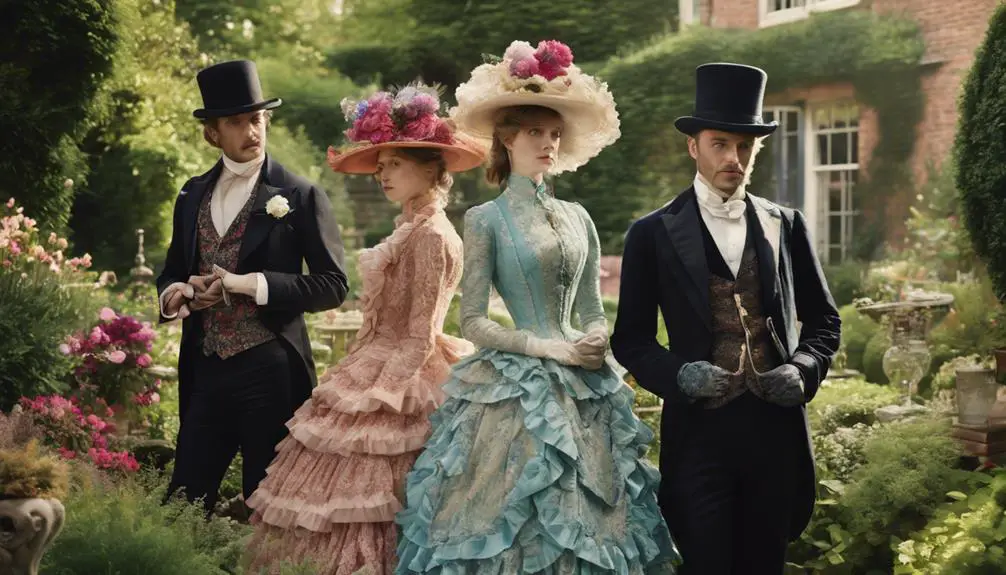
Reflecting their social status and personal growth, the fashion choices in *Dickinson* offer a compelling lens through which to understand each character's journey. The meticulously crafted costumes reveal much about the characters, from Maggie's maid uniform that highlights class disparity to the Dickinson family's elegant upper-class attire.
Edward Dickinson's regal fashion, featuring silk paisley undershirts and top hats, sets a sartorial standard for the male characters, while Austin's stylish ensembles showcase his charm and emotional complexity.
Mrs. Dickinson's sophisticated wardrobe strikes a balance between casual housewear and opulent evening gowns, with key pieces like her green silk dress at the opera underscoring her role as a fashionable matriarch.
Significantly, Sue's character changes shine through her evolving wardrobe, shifting from somber mourning attire to vibrant garments that reflect her intellectual spirit.
Each costume requires an impressive 50 to 100 hours of craftsmanship, ensuring authenticity and enhancing the visual storytelling of the series.
Cultural Impact of Costumes
Costumes in *Dickinson* have sparked a cultural renaissance, connecting 19th-century aesthetics to today's fashion landscape. Costume designer Jennifer Moeller expertly channels historical context while embracing contemporary fashion trends, making the series a significant player in the Regencycore trend. You might find it fascinating that searches for corsets skyrocketed by 123% after the show's debut, highlighting its cultural impact.
Additionally, the meticulous design choices reflect the evolution of fashion, similar to how the history and evolution of Burberry showcases the brand's enduring legacy. Each costume not only reflects character relationships but also enhances the emotional depth of the narrative. For example, Sue Dickinson emerges as an early fashion influencer, bridging the gap between past and present aesthetics. The sartorial choices resonate with viewers, as they symbolize pivotal plot developments that shape the characters' journeys.
Moreover, the recognition of *Dickinson*'s costumes during awards season emphasizes their relevance in today's fashion discourse, showcasing the timeless elegance of 19th-century fashion. The donation of over 400 props and costumes to the Emily Dickinson Museum further enriches the authentic experience for visitors, allowing them to engage more deeply with Dickinson's life.
Ultimately, the costumes in *Dickinson* do more than just adorn; they connect generations through style, story, and emotional resonance.
Frequently Asked Questions
Who Designed the Costumes for the "Dickinson" TV Show?
When you explore costume inspiration, you'll find that the designer's collaboration weaves historical references with color symbolism. Each outfit reflects character evolution, addressing wardrobe challenges while embracing fashion influences and textile choices for rich visual storytelling.
Where Can I Purchase Outfits Similar to Those Worn in "Dickinson"?
You can find outfits similar to those by exploring vintage clothing stores, online shopping platforms, and thrift store finds. Check out costume rental services, fashion inspiration blogs, and DIY tips for sustainable fashion options and period replicas.
How Much Time Was Spent on Costume Creation for Each Episode?
Costume design for each episode involves extensive episode production time. The design process includes wardrobe fittings, historical influences, and character development, balancing costume budgets and fabric selection while maneuvering time constraints for effective visual storytelling.
Are the Fabrics Used in the Show Historically Accurate?
You'll find that the fabrics used reflect historical accuracy, incorporating period materials and design inspiration. The costume team conducted extensive textile research, utilizing layering techniques and color symbolism for authentic cultural representation, alongside modern adaptations.
Did the Cast Have Input on Their Character's Costumes?
Imagine browsing a modern wardrobe; you'd find that the cast indeed had input on their costumes. Their fashion choices influenced character development, blending historical accuracy with thematic representation, color symbolism, and actor preferences for wardrobe evolution.
